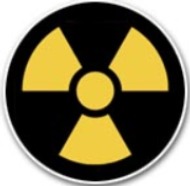Barcelona .- On April 26, 1986 reactor number four at Chernobyl nuclear plant in Ukraine (then under the tutelage of the Soviet Union) exploded. The consequences were devastating for the population. The effects of radiation exceeded 400 times the atomic bombs that exploded Americans against the Japanese cities of Hiroshima and Nagasaki.
Thousands of people were affected by thyroid cancers, including women, children and elderly and thousands of people still suffer from the unpredictable effects of nuclear radiation. Numerous scientific studies of several European Union countries, Russia and former Soviet republics put the death toll between 200,000 and 273,000 people and predicted a figure of about 93,000 fatal cancers, as underlined in the area nearest to Chernobyl living between 600,000 and 700,000.
25 years ago were evacuated a total of 350,000 people of whom some 100,000 have returned, particularly the elderly who live with a "high" level of contamination. It is estimated that more than one million people have died since then, although the data are confusing because the Belarusian authorities have imposed their authority to systematically prevent the development of reports and scientific studies to clarify the extent to which radioactivity has affected and continues to affect thousands of victims of that terrible accident.
As a sign and witness of the tragedy, the photographers of the prestigious Magnum news agency has reported excellent work that this link shows the magnitude of human tragedy in Chernobyl catastrophe that the world hopes never happens again despite the nuclear disaster that Japan is still trying to correct to avoid serious leaks of radioactivity in the sea and the environment in Fukushima nuclear power plant 1. 


Thousands of people were affected by thyroid cancers, including women, children and elderly and thousands of people still suffer from the unpredictable effects of nuclear radiation. Numerous scientific studies of several European Union countries, Russia and former Soviet republics put the death toll between 200,000 and 273,000 people and predicted a figure of about 93,000 fatal cancers, as underlined in the area nearest to Chernobyl living between 600,000 and 700,000.
25 years ago were evacuated a total of 350,000 people of whom some 100,000 have returned, particularly the elderly who live with a "high" level of contamination. It is estimated that more than one million people have died since then, although the data are confusing because the Belarusian authorities have imposed their authority to systematically prevent the development of reports and scientific studies to clarify the extent to which radioactivity has affected and continues to affect thousands of victims of that terrible accident.
As a sign and witness of the tragedy, the photographers of the prestigious Magnum news agency has reported excellent work that this link shows the magnitude of human tragedy in Chernobyl catastrophe that the world hopes never happens again despite the nuclear disaster that Japan is still trying to correct to avoid serious leaks of radioactivity in the sea and the environment in Fukushima nuclear power plant 1.



No comments:
Post a Comment